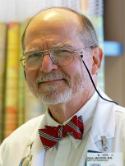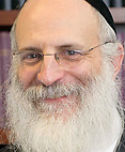Second malignant neoplasms in long-term survivors of osteosarcoma: Memorial Sloan-Kettering Cancer Center experience Journal Article
| Authors: | Aung, L.; Gorlick, R. G.; Shi, W.; Thaler, H.; Shorter, N. A.; Healey, J. H.; Huvos, A. G.; Meyers, P. A. |
| Article Title: | Second malignant neoplasms in long-term survivors of osteosarcoma: Memorial Sloan-Kettering Cancer Center experience |
| Abstract: | BACKGROUND. The authors investigated the incidence and relative risk of secondary malignant neoplasms in long-term survivors of osteosarcoma. METHODS. A comprehensive list of 509 patients with primary osteosarcoma treated at our institution between February 1973 and March 2000 was identified. All study patients received chemotherapy and/or surgery on one of six different protocols (T4, 5, 7, 10, 12, and CCG-7921/POG-9351). Chemotherapy was scheduled for up to 40 weeks with some variations in the actual treatment period and consisted of various combinations of the following agents: high-dose methotrexate, doxorubicin, bleomycin, cyclophosphamide, dactinomycin, vincristine, cisplatin, and ifosfamide. RESULTS. Secondary malignant neoplasms (SMN) occurred in 14 of 509 patients. Only one had pulmonary metastasis at diagnosis and subsequent multiple recurrences that required thoracotomies and further modification of the chemotherapy regimen. The median age at diagnosis for osteosarcoma was 16.6 years (range, 3.1-74.4 years). The median follow-up was 5.2 years (range, 0.1-25.0 years). The time interval from diagnosis of the primary osteosarcoma to the development of SMN was 1.3-13.1 years (median, 5.5; 95% confidence interval [CI], 3.6-9.6). The most common SMN occurred in the central nervous system (n = 4): anaplastic glioma, meningioma, high-grade glioma, and maxillary astrocytoma. There were two cases of acute myeloid leukemia and one case each of myelodysplastic syndrome, non-Hodgkin lymphoma, high-grade pleomorphic sarcoma, leiomyosarcoma, fibrosarcoma, breast carcinoma, and mucoepidermoid carcinoma. The overall 5 and 10-year cumulative incidences of SMNs were 1.4% ± 1.1% and 3.1% ± 1.8%. The standardized incidence ratio was 4.6 (95% CI, 2.53-7.78, P = 0.00001) for the cohort and 3.64 (95% CI, 1.82-6.52, P = 0.0007) when patients with a history of retinoblastoma or Rothmund-Thomson syndrome were excluded. CONCLUSIONS. The overall incidence of secondary malignancies in long-term survivors of osteosarcoma was significantly higher than the expected incidence of cancer in the general population. However, the standardized incidence ratios were much lower than those reported for Hodgkin disease and retinoblastoma. Although additional follow-up is warranted, the successes of current treatment regimens consisting of intensive, high-dose chemotherapy in combination with topoisomerase II inhibitors outweigh the risks. © 2002 American Cancer Society. |
| Keywords: | osteosarcoma; adolescent; adult; cancer survival; child; controlled study; treatment outcome; aged; child, preschool; middle aged; acute granulocytic leukemia; major clinical study; cancer recurrence; cisplatin; doxorubicin; cancer combination chemotherapy; methotrexate; follow up; glioma; follow-up studies; antineoplastic agent; metastasis; thoracotomy; antineoplastic combined chemotherapy protocols; incidence; cohort analysis; cyclophosphamide; vincristine; retinoblastoma; ifosfamide; central nervous system; time factors; sarcoma; confidence interval; lung metastasis; myelodysplastic syndrome; nonhodgkin lymphoma; fibrosarcoma; breast carcinoma; newborn; dactinomycin; bleomycin; adenosquamous carcinoma; meningioma; neoplasms, second primary; dna topoisomerase inhibitor; leiomyosarcoma; astrocytoma; long-term survivors; rothmund thomson syndrome; humans; human; male; female; priority journal; article; second malignant neoplasms |
| Journal Title: | Cancer |
| Volume: | 95 |
| Issue: | 8 |
| ISSN: | 0008-543X |
| Publisher: | Wiley Blackwell |
| Date Published: | 2002-10-15 |
| Start Page: | 1728 |
| End Page: | 1734 |
| Language: | English |
| DOI: | 10.1002/cncr.10861 |
| PUBMED: | 12365021 |
| PROVIDER: | scopus |
| DOI/URL: | |
| Notes: | Export Date: 14 November 2014 -- Source: Scopus |
Altmetric
Citation Impact
BMJ Impact Analytics
Related MSK Work







